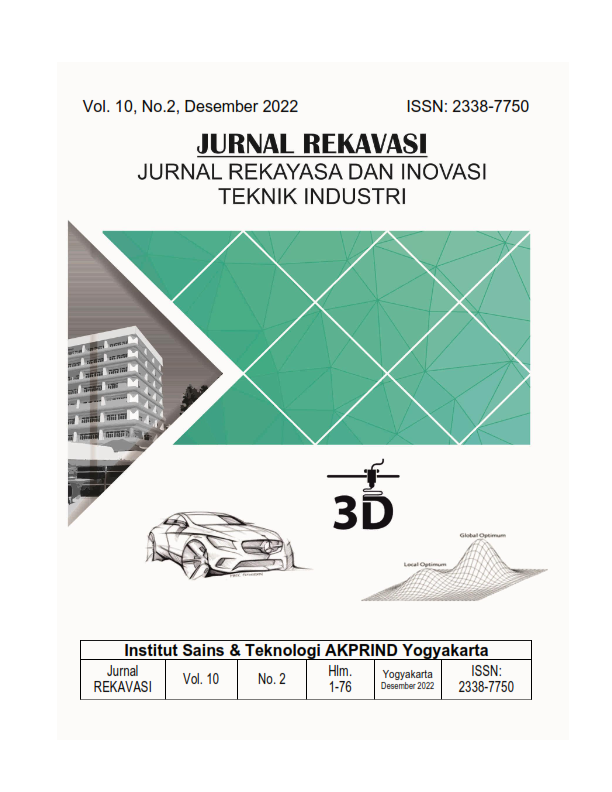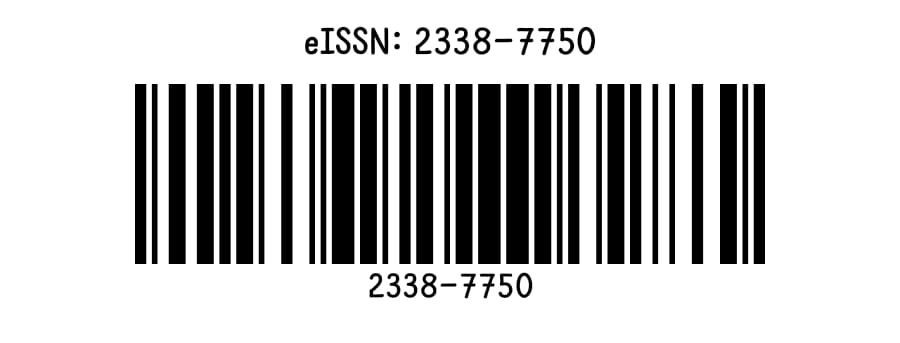ANALISIS BEBAN KERJA FISIK DAN MENTAL PEKERJA PADA PROSES VULKANISIR BAN DENGAN MENGGUNAKAN METODE CARDIOVASCULAR LOAD (CVL) DAN NASA-TLX
DOI:
https://doi.org/10.34151/rekavasi.v10i2.4182Keywords:
Cardiovascular Load, NASA-TLX, Pearson Product Moment Correlation, Retreading TireAbstract
UD. Pandawa Tire is a UD engaged in the manufacture of tires retreaded. The production process at Pandawa Tires still often does overtime due to the number of new employees 9 people and the average target of making 60 tires every day which causes fatigue and mental and physical workload. The analytical methods used to measure the physical and mental workload of workers are Cardiovascular Load (CVL) and the National Aeronautics and Space Administration Task Load Index (NASA-TLX). The results showed that the greatest physical workload was felt by workers with a CVL percentage of 46.1%, which was between 30% to 60% in the medium category, meaning that improvements are needed but not urgent. While the results of the measurement of mental workload showed that all workers were included in the high category, with the largest NASA-TLX score of 83.33. Correlation Test was Pearson Product Moment conducted to see the relationship between the value of the physical and mental workload received by the worker. The results of the calculation of the correlation test show that there is a relationship between CVL and NASA-TLX, although there is a correlation, but the correlation is significant in influencing each other between the amount of physical workload and mental workload felt by workers. The correlation value of r obtained is 0.672. Which means that there is a strong positive correlation between the physical workload and the mental burden felt by the Pandawa tire workers
References
Anggraini, Y. D., Mulyati, G. T., & Ainuri, M. (2019). Analysis of workload and long rest periods on mobile rice grain milling operator at Sidolelono Pleret Community Bantul. Journal of Physics: Conference Series, 1367(1). https://doi.org/10.1088/1742-6596/1367/1/012082.
Rachmat, A., Fathimahayati, L. D. (2021). Analisis Beban Kerja Fisik Dan Mental (Studi Kasus Pt Bukaka Teknik Utama Tbk Balikpapan) ANalysis Of Physical And Mental Workloads And Levels Of Work. Jurnal Ilmiah Intech, 3(01), 1–9.
Bertan, C. V., Dundu, A. K. T., & Mandagi, R. J. M. (2016). Pengaruh Pendayagunaan Sumber Daya Manusia (Tenaga kerja) Terhadap Hasil Pekerjaan (Studi Kasus Perumahan Taman Mapanget Raya (Tamara). Jurnal Sipil Statik, 4(1), 13–20.
Purbasari, A., & Purnomo, A. J. (2019). Penilaian Beban Fisik Pada Proses Assembly Manual menggunakan Metode Fisiologis. Sigma Teknika, 2(1), 123.
https://doi.org/10.33373/sigma.v2i1.1957.
Puteri, R. A. M., & Sukarna, Z. N. K. (2017). Analisis Beban Kerja Dengan Menggunakan Metode Cvl Dan Nasa-Tlx Di Pt. Abc. Spektrum Industri, 15(2), 211. https://doi.org/10.12928/si.v15i2.7554.
Tarwaka. (2015). Ergonomi Industri Dasar-Dasar Pengetahuan Ergonomi Dan Aplikasi Di Tempat Kerja, Edisi 2, Harapan Press, Surakarta.
Hancock, P.A., Meshkati, N. (1988). Human Mental Workload. Elsevier. North Holland.
Iridiastadi, H., dan Yassierli (2014). Ergonomi Suatu Pengantar. PT. Remaja Rosdakarya. Bandung
Manuaba, A., Vanwonterghem, K. (1996). Improvement of Quality of Life: Determination of Exposure Limits for Physical Strenuous Task Under Tropical Conditions. Joint Research Project Indonesia- Belgium. Departement of Physiologi. Universitity of Udayana. Denpasar.
Sinulingga, S. (2013). Metode Penelitian. Edisi Ketiga. Medan: USU Press










